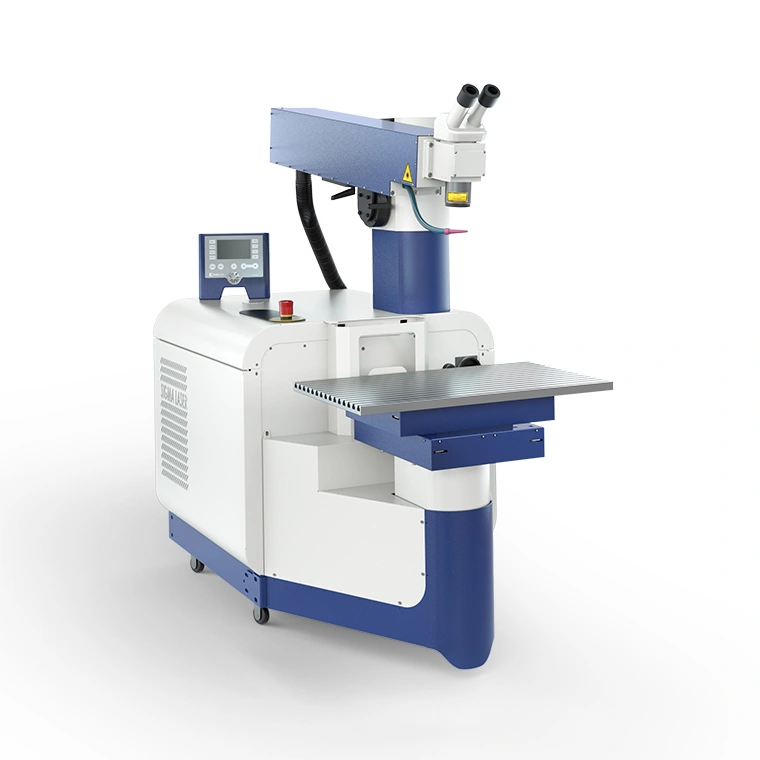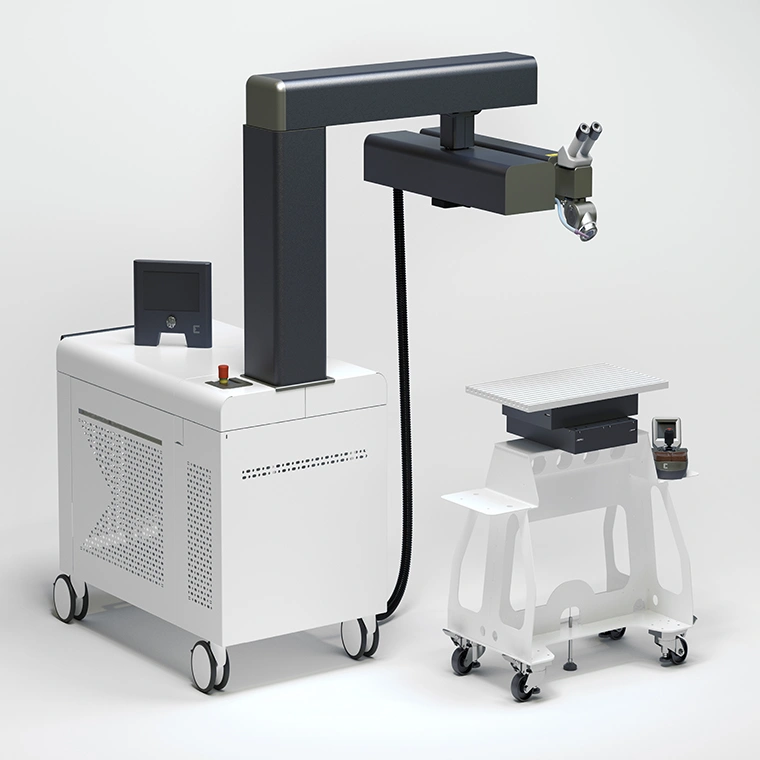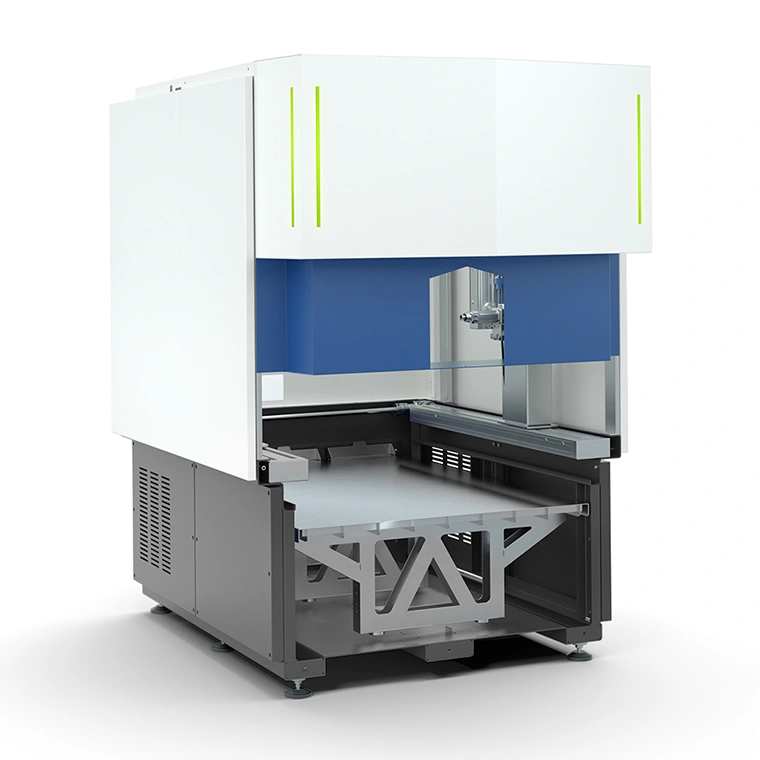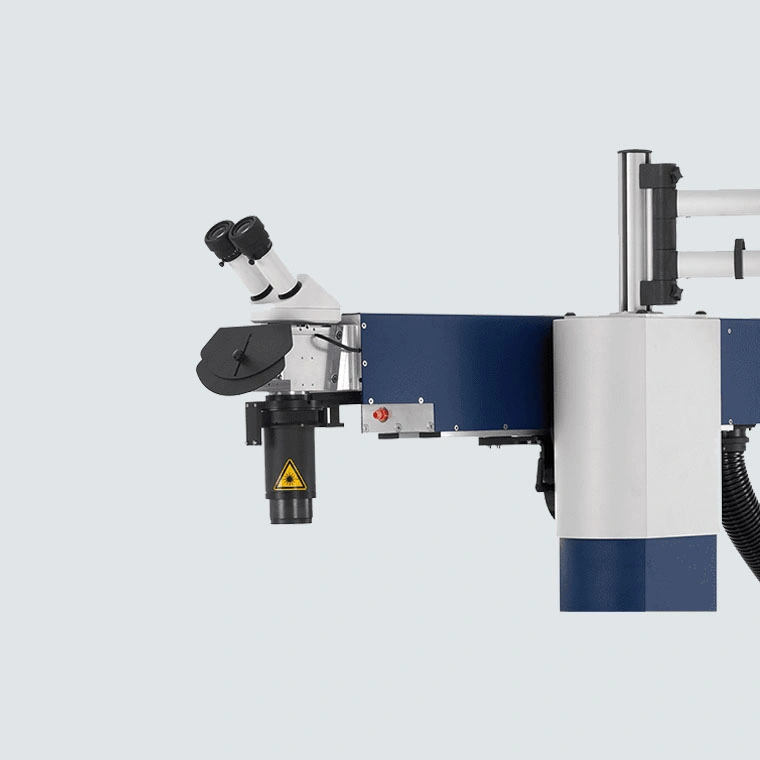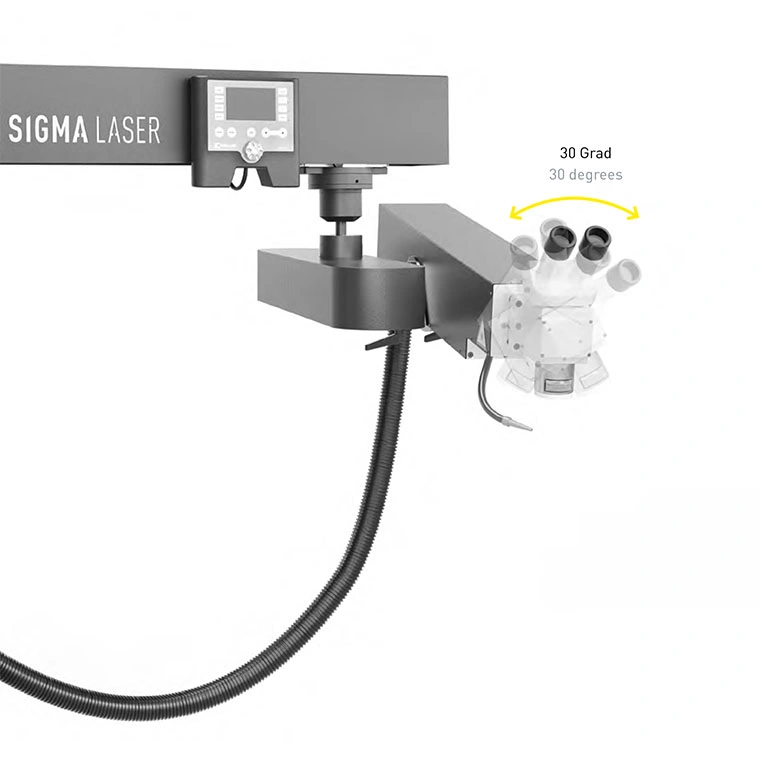Laser Welding for the Shipbuilding Industry
Shipbuilding is an industry that demands strength, precision, and durability—qualities where laser welding technology shines. From joining thick metal plates with minimal distortion to automating repetitive welding tasks on large structures, Sigma Laser systems deliver the power and accuracy needed to enhance efficiency in modern shipyards. Whether you’re building naval vessels, cargo ships, or offshore platforms, laser welding offers a future-proof alternative to traditional methods.
Recommended Laser Welding Systems for Shipbuilding Applications
Shipbuilding demands robust, high-power laser welding systems capable of handling thick marine-grade steels, large components, and complex geometries with exceptional speed and quality. Sigma Laser offers a selection of advanced welding systems and modules specifically designed to meet these stringent requirements in the shipbuilding industry. Below are the recommended Sigma Laser products ideal for shipbuilding applications, along with explanations of why each system is a perfect fit.
Sidanus Fibre
Why it’s suitable:
Sidanus Fibre delivers up to 1500 W (or more, depending on configuration) of fiber laser power, optimized for deep penetration and high-speed welding of thick steel plates commonly used in ship hulls and structural parts. Its rigid four-axis motorized setup ensures precise, repeatable welds on large, heavy components.
Key advantages:
- High laser power for deep weld penetration and fast welding speeds
- Four-axis motion (X, Y, Z, rotary C) for complex and angled welds
- Robust design built for heavy industrial environments and shipyards
Sineo Fibre
Why it’s suitable:
Sineo Fibre’s mobile platform with a flexible swivel arm offers excellent accessibility for large ship sections and confined shipyard spaces. Its mobility enables on-site welding and repairs directly on the ship hull or modules without costly disassembly.
Key advantages:
- Flexible four-axis movement for accessing challenging weld points
- Compact, mobile design ideal for shipyard workflow
- Energy-efficient laser source for prolonged use
Simass Base Unit
Why it’s suitable:
The Simass Base Unit is a highly stable and configurable platform ideal for integrating automation features essential in shipbuilding, such as wire feeders for hybrid laser-arc welding or advanced optics for multi-material joints. This modularity suits both fabrication and repair lines.
Key advantages:
- Strong mechanical stability for precise positioning of large components
- Supports integration of additional axes and accessories for complex tasks
- Adaptable to automation software for repeatable production workflows
Motor-Driven Z Axis
Why it’s suitable:
This module provides exact vertical focal positioning, crucial for welding varying material thicknesses and stepped joints in shipbuilding structures. Its micron-level accuracy ensures consistent weld quality across large-scale parts.
Key advantages:
- 100 mm travel range with high repeatability
- Easy integration with multi-axis systems and automation software
- Reduces manual adjustments and operator fatigue
Swivelling Y Axis
Why it’s suitable:
The Swivelling Y Axis adds ±30° rotational freedom to the welding head, allowing precise access to angled, curved, or awkward weld joints frequently encountered in ship components, such as bulkheads and curved hull sections.
Key advantages:
- Facilitates high-quality fillet and inclined welds
- Improves operator efficiency by reducing repositioning time
- Compatible with multi-axis automated welding lines
Sigomatic Pro
Why it’s suitable:
Sigomatic Pro streamlines complex weld path programming and real-time process monitoring, essential for large-scale shipbuilding production and quality assurance. It enables easy automation of multi-axis welds and integration with inspection systems.
Key advantages:
- User-friendly interface with real-time visual feedback
- G-code output for CNC integration and traceability
- Supports multi-axis control for consistent weld quality
Sigma Laser’s powerful portfolio of fiber laser welding systems and modules is perfectly suited to the demanding needs of shipbuilding. Whether you require high-power stationary units for thick plate welding, mobile systems for on-site repairs, or advanced automation for complex geometries, Sigma Laser provides reliable, flexible, and efficient solutions to optimize your production and maintenance workflows. These systems ensure superior weld quality, reduced downtime, and increased throughput—empowering shipbuilders to meet industry standards and project deadlines with confidence.
Have Questions? We’re Here to Help!
Speak with our specialists to explore the best laser welding systems for your specific industry challenges:
ApplicationsKey Use Cases of Laser Welding in the Shipbuilding Industry
Laser welding is increasingly being adopted in the shipbuilding industry to meet growing demands for speed, durability, and weight reduction. From structural fabrication to intricate component assembly, laser-based solutions are helping shipyards enhance productivity and maintain the highest standards of weld integrity. Below are some of the most critical applications:
Hull and Deck Panel Welding
Large ship sections such as hulls, decks, and bulkheads benefit from laser hybrid welding, which enables deeper penetration and faster joining of thick steel plates. This significantly reduces heat distortion, minimizes rework, and accelerates overall production time.
Joining Lightweight Components
With growing emphasis on fuel efficiency, shipbuilders are increasingly incorporating lightweight materials like aluminum and high-strength steels. Laser welding provides clean, precise, and low-heat input joining—ideal for thin-walled or dissimilar metal assemblies used in superstructures, bridges, and fast vessels.
Precision Welding of Pipe Systems
In cruise ships, naval vessels, and offshore platforms, extensive pipe networks for fuel, water, and ventilation are required. Laser welding ensures leak-free, corrosion-resistant joints, especially in stainless steel and duplex piping used in hygienic or high-pressure applications.
Welding of Electrical Enclosures & Instrumentation Panels
Modern ships contain vast amounts of electronics and control systems housed in stainless or aluminum enclosures. Laser welding enables precise, repeatable joining of these components without compromising structural integrity or aesthetics.
Repair and Retrofit Operations
Laser systems are increasingly used in ship maintenance, especially for weld repairs in confined or hard-to-reach areas. The localized heat and minimal spatter make laser welding ideal for on-site work during dry dock or emergency repairs.
Fabrication of Propulsion and Engine Components
Laser welding is used in producing and repairing complex propulsion elements such as propeller blades, nozzles, fuel injectors, and engine housings—where metal fatigue resistance and precision are paramount.
Choosing the Right Laser Welding System for Shipbuilding Applications
Selecting the ideal laser welding system for shipbuilding is critical to achieving robust, precise, and efficient fabrication of large marine structures. Shipbuilding involves diverse materials, thick sections, and complex geometries that require careful consideration of several factors to ensure optimal welding performance and long-term durability.
Key Factors to Consider When Choosing a Laser Welding System for Shipbuilding
-
Material Compatibility
Shipbuilding commonly uses marine-grade steels, aluminum alloys, and stainless steel, often with corrosion-resistant coatings. Ensure the laser system supports welding of thick plates and various alloys without compromising corrosion resistance or structural integrity. -
Power and Penetration Depth
Due to the thickness of ship hulls and structural components, high-power fiber lasers or hybrid laser-arc systems (exceeding 1 kW) are preferred to achieve deep penetration and fast welding speeds, minimizing heat input and distortion. -
Beam Quality and Focus Control
A laser with excellent beam quality and adjustable focus ensures precise energy delivery even on large, curved surfaces and varying material thicknesses—critical for reducing defects and improving weld consistency. -
Multi-Axis and Automation Capabilities
Large ship parts often require welding from multiple angles and positions. Systems equipped with multi-axis (X, Y, Z, rotary) motion and automated programming (such as Sigomatic Pro) facilitate seamless, repeatable welds without manual repositioning, improving throughput and operator safety. -
Hybrid Welding Technology
Hybrid laser-arc welding combines the strengths of laser precision and arc filler material, offering better tolerance for joint fit-up and thicker welds—ideal for shipbuilding’s structural demands. -
Robust Industrial Design and Safety Features
Shipyard environments are demanding, so choose laser systems built with rugged construction, integrated safety enclosures, and efficient cooling systems to withstand heavy-duty operations and ensure operator protection.
Summary: Invest in the Right Laser Welding Solution for Shipbuilding
Choosing a laser welding system tailored for shipbuilding enhances weld quality, production speed, and structural reliability. Sigma Laser’s portfolio offers:
- High-power fiber and hybrid laser systems designed for thick marine materials
- Superior beam control and multi-axis automation for complex hull geometries
- Advanced software integration for programmable, consistent welding paths
- Durable industrial designs optimized for shipyard environments
Investing in the right laser welding technology will accelerate your shipbuilding processes, reduce rework, and ensure strong, long-lasting joints critical for marine safety and performance.
Laser Welding in the Shipbuilding Industry: Powering the Future of Marine Engineering
The shipbuilding industry operates at the intersection of scale, strength, and precision. As vessels grow in complexity and demand for efficiency rises, traditional welding methods struggle to keep up with the evolving requirements of modern shipyards. Laser welding is rapidly becoming a transformative force in this field—offering unmatched precision, faster processing times, and significantly lower distortion levels in thick and complex materials.
From structural hull components and watertight bulkheads to pipe systems and outfitting elements, laser welding provides consistent, high-quality joints that enhance the strength and integrity of marine vessels. The ability to automate complex welding tasks over large areas—while ensuring repeatability and reducing rework—makes laser systems ideal for both military and commercial shipbuilding applications.
Sigma Laser’s advanced welding systems are engineered to meet the extreme demands of ship construction. Whether dealing with high-strength steels, aluminum alloys, or hybrid materials used in offshore platforms, our systems provide the stability, control, and power needed to perform with excellence.
By integrating laser welding into your shipbuilding workflows, you’re not just improving productivity—you’re investing in the future of marine innovation.
Why Choose Laser Welding for Shipbuilding Manufacturing?
In shipbuilding, structural integrity, corrosion resistance, and manufacturing efficiency are paramount. From hull fabrication and engine components to intricate piping systems and custom fittings, the welding technology used directly impacts a vessel’s durability, safety, and lifecycle cost.
Traditional welding techniques—such as arc welding, MIG, or TIG—often fall short when applied to modern marine-grade alloys and complex geometries. They typically generate high heat input, leading to distortion, excessive post-processing, and increased material stress. These challenges can compromise both structural precision and production timelines.
Laser welding, by contrast, has emerged as a transformative solution in the maritime sector. It offers highly focused energy delivery, exceptional precision, and deep penetration capabilities with minimal distortion—ideal for large-scale, high-performance ship components. Whether you’re joining thick steel plates, intricate stainless piping, or dissimilar metals in confined areas, laser welding enhances both build quality and operational efficiency.
How Laser Welding Advances Shipbuilding Manufacturing
Aspect |
Conventional Methods |
Laser Welding Advantage |
Heat Input |
High, causing warping and stress |
Localized heat minimizes distortion and preserves integrity |
Precision |
Limited, especially on curved or tight surfaces |
High-precision beam enables accurate welds in complex geometries |
Material Compatibility |
Best suited for uniform metals |
Excellent with dissimilar metals, high-strength alloys, and marine-grade stainless steels |
Post-Processing |
Requires grinding, straightening, and rework |
Clean welds reduce finishing time and material loss |
Access to Tight Areas |
Difficult in narrow or submerged spaces |
Laser beam reaches confined joints and hard-to-access spots |
Repeatability |
Operator-dependent and inconsistent |
CNC-controlled process ensures consistent, high-quality results |
Structural Integrity |
Can introduce fatigue and microcracks |
Deep metallurgical bonds ensure long-term durability in harsh marine environments |
Why Shipbuilders Are Turning to Laser Welding
From naval vessels and tankers to luxury yachts and offshore structures, leading manufacturers are adopting laser welding for its unmatched capabilities. Here’s why:
- Minimizes thermal distortion, preserving structural accuracy in long seams and thick plates
- Enables fast, clean welds, reducing rework and overall labor costs
- Performs well on corrosion-resistant alloys used in marine applications (e.g., duplex stainless steel, Inconel)
- Supports automation and digital workflows for faster turnaround and better traceability
- Improves fatigue resistance, a key factor for long-term ship performance
- Ideal for hybrid joining, allowing integration of new lightweight materials and smart components
Applications Throughout the Shipbuilding Lifecycle
Laser welding is not limited to assembly—it supports the entire product lifecycle:
- During construction: Efficient for large hull sections, stiffeners, bulkheads, and specialized systems (e.g., fuel, HVAC)
- During maintenance: Ideal for in-place repair of corroded or fatigued components without disassembly
- During retrofit or customization: Supports modular upgrades, piping alterations, and component additions with minimal downtime
Future-Proof Your Shipbuilding Operations with Laser Welding
The marine industry faces growing pressure for faster production, lower emissions, and better durability. Laser welding answers that call by offering precision, strength, and adaptability—all while reducing waste and improving productivity.
Sigma Laser’s state-of-the-art welding systems deliver the reliability and scalability modern shipbuilders demand. Whether you’re building the next generation of high-performance vessels or retrofitting existing fleets, laser welding ensures every seam, joint, and weld meets the highest maritime standards—today and tomorrow.
innovationsLaser Technologies Used in Shipbuilding Industry
Modern shipbuilding has embraced laser technology as a transformative tool for enhancing manufacturing precision, speed, and durability. From hull construction to component repair, various laser-based solutions are now integral to achieving high productivity and quality in both commercial and naval shipyards.
Flash Lamp Pumped Nd:YAG Lasers
These lasers are ideal for deep penetration welding of thick structural components in shipbuilding, such as steel frames and reinforcement beams. Their pulsed energy allows precise control and high-quality welds in critical joints.
Fiber Laser Systems
Fiber lasers offer high efficiency, low power consumption, and minimal maintenance, making them perfect for precise cutting and welding of metal assemblies in ships. They are especially effective in automated ship production lines.
Pulsed Laser Technology
Pulsed lasers are commonly used for spot welding, localized processing, and minimizing heat distortion in thin ship panels. They are highly useful for repairs and fine welding of interior components in shipbuilding.
Advanced Control Software and Automation
Advanced control systems and automation enable consistent, fast, and accurate laser welding processes. In shipbuilding, they help reduce human error and significantly improve productivity, especially in large-scale manufacturing projects.
Why Sigma Laser? Key Advantages of Sigma Laser for the Shipbuilding Industry
Sigma Laser systems bring a unique combination of power, precision, and flexibility that perfectly align with the challenging demands of shipbuilding. Whether fabricating new vessels or performing critical repairs, Sigma Laser offers solutions that enhance productivity, quality, and cost-efficiency. Here are the key advantages that set Sigma Laser apart for shipbuilding applications:
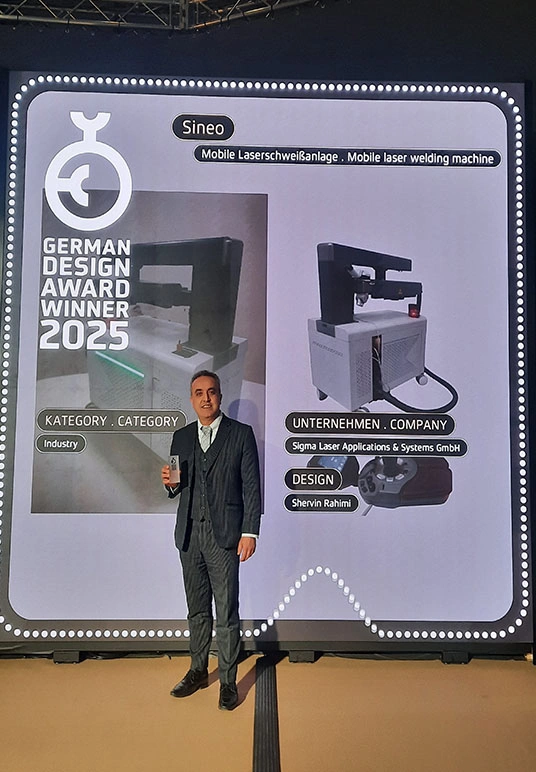
Shipbuilding requires welding of thick steel plates and heavy structural components. Sigma Laser’s fiber laser systems deliver high output power—up to multiple kilowatts—enabling deep penetration and high-speed welds that reduce production time without compromising quality.
Even in large-scale applications, precise control over the laser beam and welding parameters is vital. Sigma Laser’s advanced beam modulation and multi-axis positioning ensure micron-level accuracy, allowing flawless weld seams on complex geometries and tight tolerances.
Sigma Laser equipment is engineered to withstand harsh shipyard environments. Their rugged construction and reliable components ensure consistent operation despite dust, vibration, and temperature fluctuations common in heavy industry.
Accessing challenging weld joints on curved or angled ship parts is made easier with Sigma’s multi-axis setups—including motorized X, Y, Z, and rotary axes—offering enhanced angular flexibility and eliminating the need for costly part repositioning.
Sigma Laser’s Sigomatic Pro and other control software provide intuitive programming, real-time monitoring, and automated welding sequences. This reduces operator dependency, ensures process repeatability, and streamlines quality assurance.
Fiber laser technology is inherently more energy-efficient than traditional welding methods. Sigma Laser systems minimize power consumption and maintenance needs, reducing operational costs over the equipment lifecycle.
By concentrating energy precisely, Sigma Laser welding produces a small heat-affected zone (HAZ), minimizing thermal distortion in large steel plates. This leads to less rework and ensures the structural integrity of critical ship components.
From initial hull assembly to on-site repair of weld defects, Sigma Laser’s flexible platforms adapt to diverse shipbuilding tasks, supporting everything from thick plate welding to fine edge joining and coating applications.
Sigma Laser’s combination of power, precision, and intelligent automation makes it the trusted choice for shipbuilding professionals looking to optimize their welding operations and deliver superior results in every project.
We have worked for you
Laser Welding Workflows in Shipbuilding Manufacturing
Efficient and precise laser welding workflows are essential to meet the demanding quality and productivity standards of modern shipbuilding. Sigma Laser’s advanced systems support a range of welding processes tailored specifically to the complex geometries, thick materials, and large-scale components typical of ship construction and repair. Below is an overview of typical laser welding workflows in the shipbuilding industry:
Pre-Welding Preparation
Initial Alignment and Calibration
Laser Welding Execution
Post-Welding Inspection and Processing
Repair and Maintenance Welding
Documentation and Quality Assurance
Benefits of Optimized Laser Welding Workflows in Shipbuilding
- Reduced Production Time: High welding speeds and automation cut down ship assembly durations.
- Consistent High-Quality Welds: Precise control ensures structural integrity and longevity.
- Minimized Thermal Distortion: Less rework and higher dimensional accuracy.
- Improved Safety: Remote and automated controls reduce operator exposure to hazards.
- Flexible On-Site Repair: Adaptable systems enable fast turnaround in maintenance tasks.
Sigma Laser’s tailored workflows and technology solutions empower shipbuilders to deliver robust, high-performance vessels while optimizing efficiency and cost-effectiveness throughout the manufacturing lifecycle.
Key Tips for Using Laser Technology in Shipbuilding Industry
Laser welding has revolutionized shipbuilding by offering unmatched precision, speed, and efficiency. To fully leverage these benefits and optimize your welding operations, consider the following expert tips tailored for the shipbuilding sector:
1. Select the Right Laser System for Material Thickness
Shipbuilding involves welding thick steel plates and alloys. Choose a high-power fiber laser system capable of deep penetration and stable multi-pass welding to ensure strong, defect-free joints.
2. Optimize Welding Parameters for Each Joint Type
Customize pulse duration, power, and feed speed depending on whether you are welding butt joints, lap joints, or fillet welds. Proper parameter tuning reduces heat input and prevents warping or cracking.
3. Use Multi-Axis Positioning and Swivel Optics
Complex ship components often require welding at challenging angles. Employ multi-axis motion systems and swivel optics to access hard-to-reach areas without disassembling assemblies or repositioning large parts.
4. Implement Real-Time Process Monitoring
Leverage integrated sensors and software (like Sigomatic Pro) to continuously monitor weld quality, temperature, and seam tracking. Early detection of anomalies helps avoid costly rework.
5. Prioritize Safety and Ergonomics
Ensure welding setups include protective enclosures, safety interlocks, and ergonomic controls. This protects operators from laser exposure and reduces fatigue during long shifts.
6. Regular Maintenance and Calibration
Keep your laser systems in peak condition through scheduled maintenance. Regular calibration ensures consistent beam quality and repeatable welding results across large production volumes.
7. Train Operators on Software and Hardware
Invest in comprehensive training for your team on both laser hardware and software interfaces. Skilled operators can exploit advanced automation features to maximize productivity and maintain high standards.
8. Plan for Flexible On-Site Repairs
Ship repair often occurs under challenging conditions. Use mobile laser systems with modular components to provide rapid, precise welding on-site without costly transport or disassembly.
9. Document Processes for Compliance
Maintain detailed records of welding parameters, quality checks, and repairs to meet industry standards and regulatory requirements. Sigma Laser’s software solutions facilitate traceability and audit readiness.
Summary
By carefully selecting equipment, optimizing parameters, and embracing advanced monitoring and automation, shipbuilders can harness laser technology to improve weld quality, accelerate production, and reduce costs. Sigma Laser’s industry-specific solutions and expert support ensure you achieve reliable, efficient, and safe welding workflows tailored to shipbuilding’s unique demands.
FAQsFrequently Asked Questions about Laser Welding In Shipbuilding Industry
In the demanding environment of shipbuilding, understanding the capabilities and best practices of laser welding is essential for achieving superior results. Below, we address the most common questions to help you get the most out of laser welding technology in your shipbuilding projects.
Laser welding systems are compatible with a wide range of shipbuilding materials, including carbon steel, stainless steel, aluminum alloys, and high-strength steels used in hulls and structural components.
Laser welding offers higher precision, minimal heat-affected zones, faster processing speeds, and reduced distortion compared to traditional arc welding, making it ideal for complex and thick ship parts.
Yes, with the use of high-power fiber lasers and multi-axis positioning systems, laser welding can effectively handle large panels, thick plates, and complex geometries common in shipbuilding.
Absolutely. Mobile laser welding units designed for shipbuilding enable precise repairs and modifications directly on-site, minimizing downtime and transportation costs.
Operators must use proper protective eyewear, install safety enclosures and interlocks, and follow strict safety protocols to protect against laser exposure and fumes.
Laser welding produces strong metallurgical bonds with minimal distortion, maintaining or even enhancing the structural integrity compared to conventional welding techniques.
Regular cleaning, optical alignment checks, cooling system maintenance, and software updates are essential to ensure consistent performance in demanding shipyard conditions.
Sigma Laser’s software, such as Sigomatic Pro, provides precise control, real-time monitoring, programmable weld paths, and comprehensive data logging, improving accuracy and repeatability.
Yes, many Sigma Laser systems integrate seamlessly with robotic arms and automated production lines, enhancing throughput and consistency.
Operators should receive training on laser safety, system operation, parameter optimization, and software use to maximize efficiency and ensure safe working conditions.
Educational Resources & Related Articles on Laser Welding in Shipbuilding
Stay informed and enhance your knowledge with our curated selection of educational resources and expert articles focused on laser welding applications in the shipbuilding industry. Whether you’re looking to deepen your understanding of advanced welding techniques, explore case studies, or keep up with the latest technological innovations, these materials are designed to support your journey toward improved manufacturing efficiency and quality.
Recommended Resources:
-
Comprehensive Guide to Laser Welding in Heavy Industry
Learn how laser welding is transforming large-scale manufacturing, including shipbuilding, with improved precision and speed. -
Case Study: Improving Structural Integrity in Ship Hull Fabrication
Explore real-world examples of laser welding enhancing strength and reducing defects in ship components. -
Whitepaper: Innovations in Multi-Axis Laser Welding Systems
Discover how multi-axis control and automation are revolutionizing complex welding tasks in maritime construction. -
Webinar: Best Practices for Laser Welding in Harsh Environments
Gain insights from industry experts on optimizing laser welding performance under challenging shipyard conditions.
Have Questions? We’re Here to Help!
Speak with our specialists to explore the best laser welding systems for your specific industry challenges:

